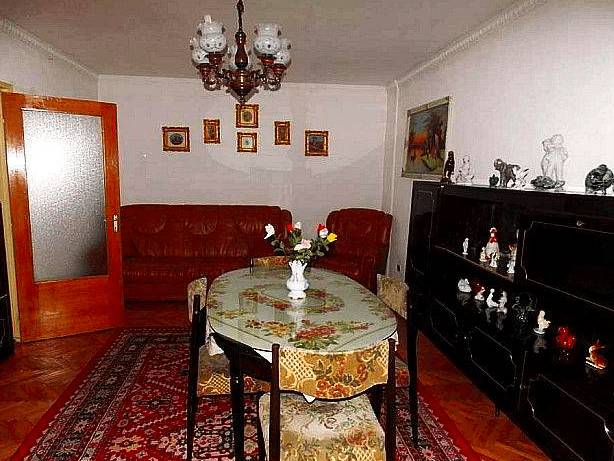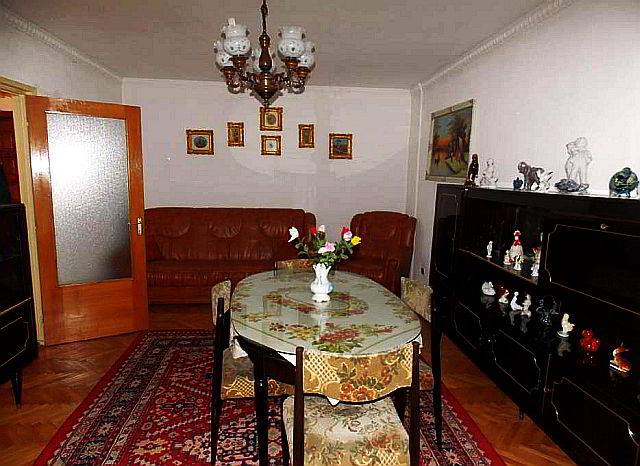Let me see your living room to tell you who you are
A work colleague told me a few days ago he saw a French article about Romanians’ awful taste in interior design. It wasn’t a personal critic, but it was the actual title of the article. You can imagine that the next second I was Google-ing it, looking it up and I was pleasantly surprised to discover an interview in which an art and culture passionate, Claudiu Cobilanschi, was talking about one of his latest projects: “The Living Room Museum”.
What is The Living Room Museum?
For the moment it’s projected as an online museum, but in reality it’s barely a Facebook page where are regrouped a bunch of photos made by Claudiu Cobilanschi himself when he visited people’s houses in his past, plus other photos sent randomly and voluntarily by a few Romanians, along with some collaborations or significant photos sent by some of the project leader’s friends.
It is actually a national project, even international, but its development and final accomplishment need a long time. It’s not an easy project that can be done just like that. The pictures are really meaningful and are supposed to show the changes in the Romanian mentality and society along the years. “I’ve had the idea for a long time and it went through a lot of changes. But the shape it has now has barely reached 10 days old. (…) This is not my first artists’ book and I could publish it tomorrow. However, this time, I would like more collaborations, I have a few invites in mind, I am waiting to find the right analysis angle of this time capsule, which is the living room.” Claudiu Cobilanschi says. (VICE interview)
Memories about the living room I grew up in
Looking through the pictures on the Facebook Page dedicated to this Living Room Museum, I remembered happily about the living room of the apartment in Botoşani, where I spent my childhood. Although I had my own bedroom with a desk and a few book shelves, and, later on, a computer, I didn’t stay in it for anything other than to do my homework, read a book and, obviously, to sleep. But the rest of the day, before and after school, or on weekends when I wasn’t busy with homework or going out with my friends, I went in the living room.
The living room was the place in which decoration I didn’t contribute at all, but where I spent a lot of intense and meaningful moments. In the living room I would stretch on the sofa to relax, to have some peace and quiet (why not in my bedroom?). In the living room I would also watch my favorite TV shows and movies. My parents had a TV in their bedroom but I didn’t. To have access to the TV so that I could watch what I liked, I had to go in the living room.
Also, when we would have guests over, they would come in the living room. It was the house’s main place. A big, clean and well-ordered living room with an impressive amount of books and porcelain dolls, vases, pictures and beautiful dollies represents a respected family, well-cultured and open-minded. The sofa has to fit in as well and it can’t be too special, too big or too small. No, it has to be just right for people to feel comfortable when sitting on it and talking. Another important aspect in the perfect living room are the curtains covering the windows and the balcony door. No wrinkles were accepted and the number of folds was important, as well as the overall look of it. We cannot forget about the library that has to cover a whole wall and where everything important is put on display.
The last important thing is the colorful Persian carpet that ideally covers all the surface between the furniture and the sofa. The table was less important because we would usually eat in the kitchen. But we had an extensible table in the living room for important occasions and festivities.
Thoughts put into perspective
This was my childhood’s living room, slightly crowded and not modern enough. Nowadays I notice that the interior design style has evolved and diversified a lot thanks to globalization. Some people prefer a rather functional style, creating a relatively open space. Others personalize this room with souvenirs and memories from trips or objects that connect them to their hobbies. Some families are more tied to the popular culture and religion and therefore they decorate their living rooms with hand sawn textiles and icons. Finally, there are also ‘luxurious’ living rooms with mural ornaments, chimneys, where you can feel the influence of an interior designer.
They are all beautiful, they all have their stories that should be investigated. Romanian living rooms have a lot to say.
Therefore I can hardly wait to see Claudiu Cobilanschi’s final work, to see how it’s organised, what themes he will highlight, whether they’re chronological or not… I would like to read his analysis, to see what elements have been passed on to us that we cannot get rid of, what feelings and images show up, what identity is sketched. What impact the opening of the national borders and the arrival of brands like IKEA in Romania had. What we have completely abandoned and what we’re going towards in the future of interior design and not only.
NB : All the pictures have been added from the project’s Facebook Page -“Muzeul Sufrageriilor”.
Andreea



Pingback: Lasǎ-mǎ sǎ-ți vǎd sufrageria ca sǎ-ți zic cine eşti - Lively Romania